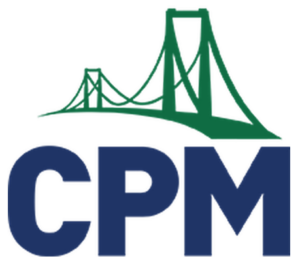Gail Anderson Lansdale, PA gailanderson@cpm.org
As an alumna of the Massachusetts Institute of Technology, I like to keep up with the happenings of my alma mater, and, as a CPM Teacher Leader, I was delighted to discover that MIT has moved far in the direction of collaboration-based teaching since my days of large lectures there. In fact, the culture has changed so much, that it is now the expectation of many students: a current MIT student was recently telling me about one of her classes and commented, “I don’t like to criticize teachers… but PowerPoint slides, really? It gives me plenty of time to sit and stare out the window and ponder life.”
While many of their courses are still in large lecture halls (and there is of course a time and place for that), in one of the biggest courses at MIT, freshman physics (a general requirement for all 1000 freshmen), MIT uses a high-tech, student-centered, cooperative learning approach called TEAL lab. Here is the background to TEAL, from their website.
“In the late 1990s, educational innovations in teaching freshman physics, specifically a method called interactive engagement, were delivering greater learning gains than the traditional lecture format. These innovations were not lost on Professor John Belcher, teacher of first-year physics at MIT and one of the three principal investigators on the Technology Enabled Active Learning (TEAL) project. Belcher was grappling with the mismatch between traditional teaching methods and how students actually learn. Despite great lecturers, attendance at MIT’s freshman physics course dropped to 40% by the end of the term, with a 10% failure rate. Even though MIT freshmen had good math skills, they often had a tough time grasping the concepts of first-year physics. Traditional lectures, although excellent for many purposes, do not convey concepts well because of their passive nature.”
In a TEAL classroom, about ten groups of about 8 – 10 students each sit at round tables around a large classroom, which is surrounded by projectors and screens. Each workstation has computers for students to share, to force them to collaborate. The focus is on doing experiments (generally by computer simulation) and figuring out the physics underlying the results, rather than being told what the equations are and asked to repeat the work modelled by the professor. The two professors circulate around the room during class instead of lecturing from the front of the room.
The TEAL classrooms have many things in common with our CPM classes. For example, students sit in groups and talk things over, while the professors, equipped with wireless microphones, walk around, listen in on or join conversations, and stop the class to address them all and give mini-lectures or redirects as needed. Student work is displayed on the walls for discussion. Some differences? Well, they have much larger classes (about 100 students per section) than I have ever had. They also have a much higher technology budget: I use white boards on the walls around the room for students to do their work on by hand, while the kids at MIT do their work on laptops which are projected to walls all around the room by multiple projectors. And I use textbooks from CPM instead of computer applets which I or my staff have written!
So, I felt pretty pleased when I could confidently respond to a concern expressed by the founder of iRobot as we enjoyed a dinner conversation centered on current education in STEM at an MIT event last spring. His concern was one I have heard from others in leadership in technical fields: kids these days need to be able to interact with a larger community, and to think independently; they need to be taught differently: it is time to end the lecture hall model of training young people. In fact, he related to us that he had just recently fired a very capable young engineer, not because he could not handle the work or did not have good ideas, but because he simply could not work with the rest of the team in their highly collaborative environment. I assured him, that organizations such as CPM exist, and we are changing the teaching norm, one classroom at a time, all across the country. We are in there, teaching kids to pick up a pencil and “do the math,” giving them time and space to conjecture and explore patterns, and training them to talk to each other and to strive for common goals. And not just in exclusive environments such as MIT, but in schools of all shapes and sizes, from struggling inner city schools, to small independent faith-based schools, to wealthy suburban schools – “more math for more people!”

